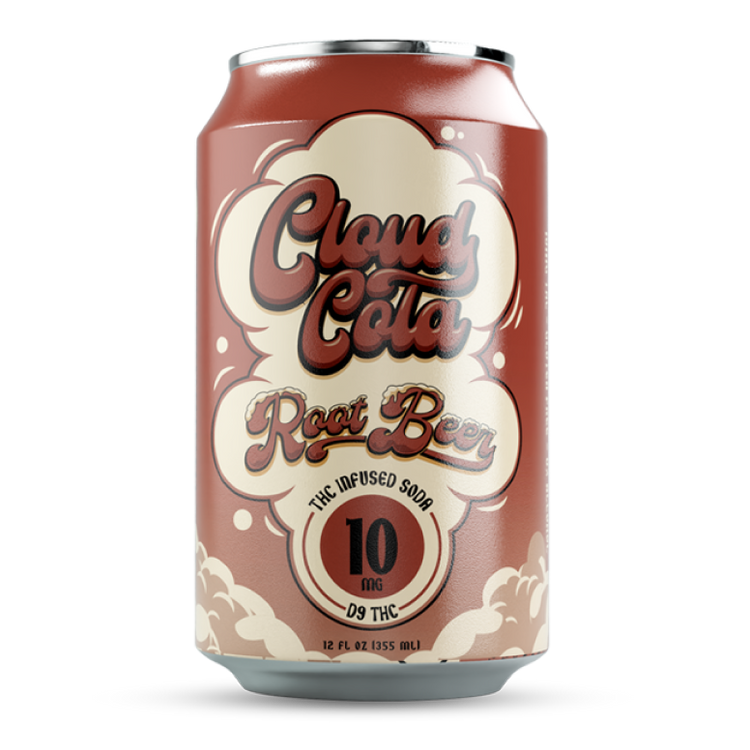The Science Behind THC Drinks And How They Hit
Absorption and Metabolism
Understanding how cannabis affects you involves delving into absorption and metabolism. When you consume THC, the psychoactive compound in cannabis, it must first be absorbed into your bloodstream before it can exert its effects. This absorption rate varies depending on the method of consumption. Once absorbed, THC travels to the liver where it undergoes metabolism, transforming into various metabolites that influence its potency and duration.
Gastrointestinal System
THC drinks typically involve ingestion, meaning absorption occurs in the digestive tract. The journey starts with your mouth, where some small amount may be absorbed directly through mucous membranes. Most THC, however, passes into the stomach and then the small intestine where it’s broken down by enzymes.
Fat solubility plays a key role: THC binds to fats, so its absorption is enhanced if consumed alongside fatty foods. This explains why edibles often have delayed but more intense effects compared to smoking or vaping, which provide faster absorption.
Once absorbed, THC travels through the bloodstream to the liver. The liver metabolizes THC into 11-hydroxy-THC, a metabolite that’s even more psychoactive than THC itself. This metabolic process can take some time, leading to the delayed onset of effects often associated with edibles. The metabolites are then distributed throughout the body, producing the desired (or sometimes unwanted) effects.
First-Pass Metabolism

First-pass metabolism is a crucial step in understanding the unique effects of THC drinks. When THC enters the digestive system, it’s initially processed by enzymes in the liver before circulating throughout the body. This “first pass” through the liver significantly alters THC’s potency.
During first-pass metabolism, the liver converts a portion of THC into 11-hydroxy-THC, a more potent metabolite. This conversion can dramatically intensify the psychoactive effects experienced compared to other consumption methods like smoking or vaping where THC bypasses this initial metabolic step.
Onset and Duration of Effects
The onset and duration of effects when consuming THC drinks differ significantly from other methods due to the complexities of ingestion and metabolism.
Delayed Absorption
The delayed absorption associated with ingesting THC contributes to a longer onset time compared to smoking or vaping, which offer near-instantaneous effects. This delay can range from 30 minutes to two hours before noticeable psychoactive effects are felt. Once absorbed and metabolized, the duration of effects from THC drinks can be prolonged, lasting anywhere from four to six hours, potentially longer depending on factors like individual metabolism and the dosage consumed.
Individual Variability
The onset and duration of effects when consuming THC drinks differ significantly from other methods due to the complexities of ingestion and metabolism.
Individual variability plays a role in how people respond to THC drinks. Factors influencing this include:
- Metabolism: The efficiency with which individuals metabolize THC can vary, leading to differences in onset time and intensity of effects.
- Body weight and composition: Body fat percentage influences THC absorption. Higher body fat generally leads to increased absorption and more potent effects.
- Tolerance: Regular cannabis users may develop a tolerance, requiring higher doses to achieve the same effects.
- Food consumption: Eating fatty foods alongside THC drinks can enhance absorption and potentially intensify the effects.
Factors Affecting Potency
The potency of THC in drinks is influenced by a complex interplay of factors that begin with ingestion and extend to metabolic processes. Understanding these factors is crucial for predicting how THC will affect an individual, as experiences can vary widely.
Concentration of THC
Several factors influence the concentration of THC in a drink and its resulting effects on a person. The starting amount of THC used in making the beverage plays a key role.
Additionally, the type of food consumed alongside the drink can impact absorption. Since THC is fat-soluble, consuming fatty foods increases the rate at which it’s absorbed into the bloodstream.
The manufacturing process itself can also influence potency. How well the THC is mixed and distributed within the drink affects its consistency and how evenly it’s consumed.
Lastly, individual metabolism rates vary from person to person. Some individuals metabolize THC more quickly than others, leading to differences in the perceived potency and duration of effects.
Drink Type and Ingredients
The potency of a THC drink is influenced by various factors that begin with the initial amount of THC used in the production process. Higher concentrations of THC will naturally result in a stronger effect. The type of ingredients used can also play a role.
For example, drinks containing fats or oils may lead to increased absorption and potency due to THC’s fat-soluble nature. The manufacturing process itself can impact consistency and distribution of the THC, affecting how evenly it is absorbed.
Potential Risks and Side Effects

While THC drinks offer a unique way to consume cannabis, potential risks and side effects should be considered. Individual reactions to THC can vary widely, and factors like dosage, metabolism, and tolerance play a significant role. Common side effects may include anxiety, paranoia, increased heart rate, dry mouth, and dizziness. In some cases, individuals may experience more severe adverse reactions, such as hallucinations or impaired coordination.
Increased Risk of Overconsumption
One of the potential risks associated with THC drinks is the risk of overconsumption. Because the effects of edibles are delayed, it’s easy to consume more than intended before feeling the full impact. This can lead to heightened side effects and an unpleasant experience.
The delayed onset of effects also makes it difficult to gauge how your body is responding to the THC. You might mistakenly believe you need more because you haven’t felt anything yet, leading to accidental overconsumption.
It’s crucial to start with a low dose, wait for at least two hours before consuming more, and be mindful of your body’s response.
Gastrointestinal Distress
Gastrointestinal distress is a common potential side effect of THC drinks. This can manifest as nausea, vomiting, diarrhea, or stomach cramps. The ingestion and breakdown of THC in the digestive system can irritate the stomach lining and trigger these symptoms.
The delayed absorption associated with edibles can exacerbate gastrointestinal discomfort. As THC slowly enters the bloodstream, it may take some time for the body to process it, leading to prolonged nausea or upset stomach.
Shop Cloud Cola’s premium marijuana sodas today
See everything this covers
Read for the full view
- Why Demigender Identities Are Important In The Fight For Gender Inclusivity - November 18, 2025
- What Is The Best Non Surgical Neck Tightening? - November 15, 2025
- What Are The Benefits Of Using CBD Gummies For Mental Well-Being - November 12, 2025
